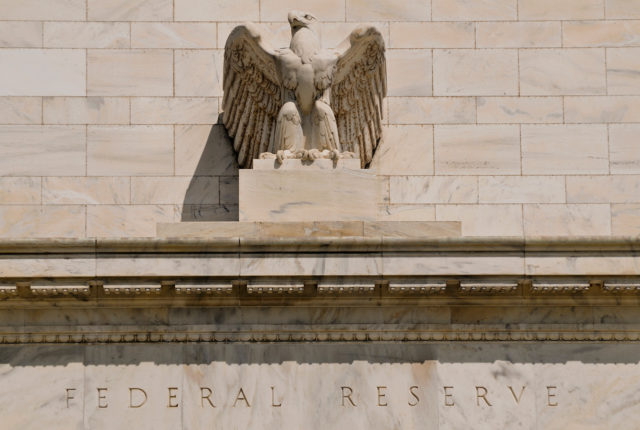
Focus On The Destination, Not The Noise…
More than 50 years ago, Benjamin Graham, the ‘Father of Value Investing,’ observed; “In the short run the market is a voting machine, but in the long run, it is a weighing machine.” That one quote contains as much wisdom today as it did then and its implications have long been recognized by those we consider investment masters.
What Graham was referring to are the two forces acting on securities, psychology, and business fundamentals. In the short run, human psychology can overwhelm fundamentals. However, over the long term it’s a company’s earnings that determines returns.
Stocks are more than just pieces of paper. When you invest in stocks you are investing in the underlying businesses, management prowess, business culture, competitive advantages, reinvestment opportunities and the like. The ultimate determinant of the price of the stock will be the underlying business’ performance. Buffett once again reiterated this in his 2017 annual letter.

“Charlie and I view that the common stocks that Berkshire owns as interest in businesses, not as ticker symbols to be bought or sold based on their chart patterns, target prices of analyst or the opinions of media pundits. Instead, we simply believe that if the businesses of the investees are successful our investments will be successful as well.”
The key to long-term results then is to identify quality businesses whose earnings will grow, buy them at a reasonable price and stick with them. It is the sticking with them where most investors come undone. Adopting the mindset of a business owner as opposed to a stock trader can help.
In our last update we shared that this time of the year (August-October) was historically a slow period for the major indexes and probably a logical time for the SP500 to take a breather. Unfortunately, history repeated itself and August and September have been rough. An 8-10% drawdown is not unusual, if anything, it is more common than not. We believe that the pullback has been caused by investor fears of a government shutdown, higher interest rates, climbing oil prices, UAW strike, the resumption of student loan payments and some good ole fashion profit taking verses the pending doom of recession.
Let’s discuss recession. To start, it’s inevitable and the United States historically has experienced a recession approximately every 5 to 10 years. The US economy tends to move in cycles, with periods of economic expansion(growth) followed by periods of contraction(recession). The last official recession as defined by 2 negative quarters of GDP in the US was in 2020 and it was caused by COVID-19 pandemic. It lasted 2 months. Although not official, some argue 2022 the US economy was in a recession. The SP500 declined 25.4% and is well on its way to recovering those losses. Dating back to 1948, the average recession lasted 10 months and the markets bottomed around the two-thirds mark or 6 months from start date. Since World War II, the average recessionary selloff in the SP500 was 29.9%. 2022 pulled up short of the average at down 25.4%.
If recessions are inevitable and drawdowns are part of investing, how can investors mitigate the decline? Risk can be reduced by asset allocation and diversification. Staying with the theme of equities and the SP500 as a benchmark, one way to reduce risk is to reduce concentration. Currently the top 10 names in the SP500 represent over 30% of the index. We suggest reducing concentration by investing in an equal-weighted portfolio. Since the inception in 2003, the RSP (Equal weighted SP500 Index) has averaged 10.9% annually versus the SP500 Index (Cap weighted Index) at 10.3%. So far in 2023, the SP500 Index has outperformed the equal weighted index by 9.9%. This is the greatest divergence between the two in a calendar year since 1998.
Only 10 Stocks Responsible for 82% of the Market’s Appreciation This Year
Combined Contributions to the S&P 500’s Performance, Year-to-Date Through August 31, 2023
The period following the late 1990s which, like today, observed elevated market concentration and pronounced mega-cap outperformance- witnessed a reversion to the mean for valuations and performance with previous leaders becoming laggards and vice versa.
During periods of market stress, (2000-2002 and 2008-2009), Equally Weighted portfolios outperformed the SP500 Cap Weighted Index.
Using fixed income or “Bonds” as part of your Asset Allocation is also another way to reduce risk. Once the Fed pauses, this strategy has proven to be successful in the last 7 Fed Rate Tightening Cycles dating back to 1984. According to Morningstar, the US Aggregate Bond Index was positive 6 months, 12 months, 3 years and 5 years following the last Fed Rate hike. The consensus opinion is the Fed is either done raising interest rates now or will be done in November 2023. One thing is clear, everyone is sitting in cash at the short end of the curve. Our opinion is that we will most likely get some slowdown over the next 6 months and therefore may be time to extend the duration out a bit on the curve. We are currently finding opportunities in the 3-5 year duration.
In conclusion, our game plan for managing client portfolios is to determine the clients needs, goals, risk tolerance and objectives. This will help us determine the asset allocation. On the Equity side, we are screening for companies with above average dividend yields, increasing revenues and high return on invested capital. We will create a custom portfolio of equally weighted companies from this list. On the fixed income side, we are utilizing money market funds for short-term needs and medium term needs we are finding opportunities in the 3-5 year High Quality Corporate Bond Market. Volatility will create opportunities and we are here to help you find them.
Paul Massey, MBA, CFP®
Managing Partner
Source: Morningstar Direct. Based on monthly return data from 9/1/1984 through 8/31/2023. Past performance is no guarantee of future results. Bonds are represented by Bloomberg US Aggregate Bond Index and Stocks are represented by S&P 500 Index. For illustrative purposes only and not indicative of any investment. Indexes do not charge management fees or brokerage expenses, and no such fees or expenses were deducted from the performance shown.
The S&P 500 is an unmanaged portfolio of specific securities, the performance of which is often used as a benchmark in judging the relative performance of certain asset classes. Investors cannot invest directly in an index. An index does not charge management fees or brokerage expenses, and no such fees or expenses were deducted from the performance shown.
BRM Investment Management (“Massey Romans Capital”) is an investment adviser registered under the Investment Advisers Act of 1940. The information presented in the material is general in nature and is not designed to address your investment objectives, financial situation or particular needs. Prior to making any investment decision, you should assess, or seek advice from a professional regarding whether any particular transaction is relevant or appropriate to your individual circumstances. Although taken from reliable sources, the Firm cannot guarantee the accuracy of the information received from third parties.
The opinions expressed herein are those of the Firm and may not actually come to pass.Author
Paul MasseyRelated posts
Navigating 2024
As we close out 2023 and move into 2024, this is the time of the year where many
Why Do Investors Care So Much About the Federal Reserve?
The Federal Reserve (Fed) is essential because they manage the supply or availab
January Update: Winning Ugly
We are going to break this month’s update into two separate pieces. First, we


